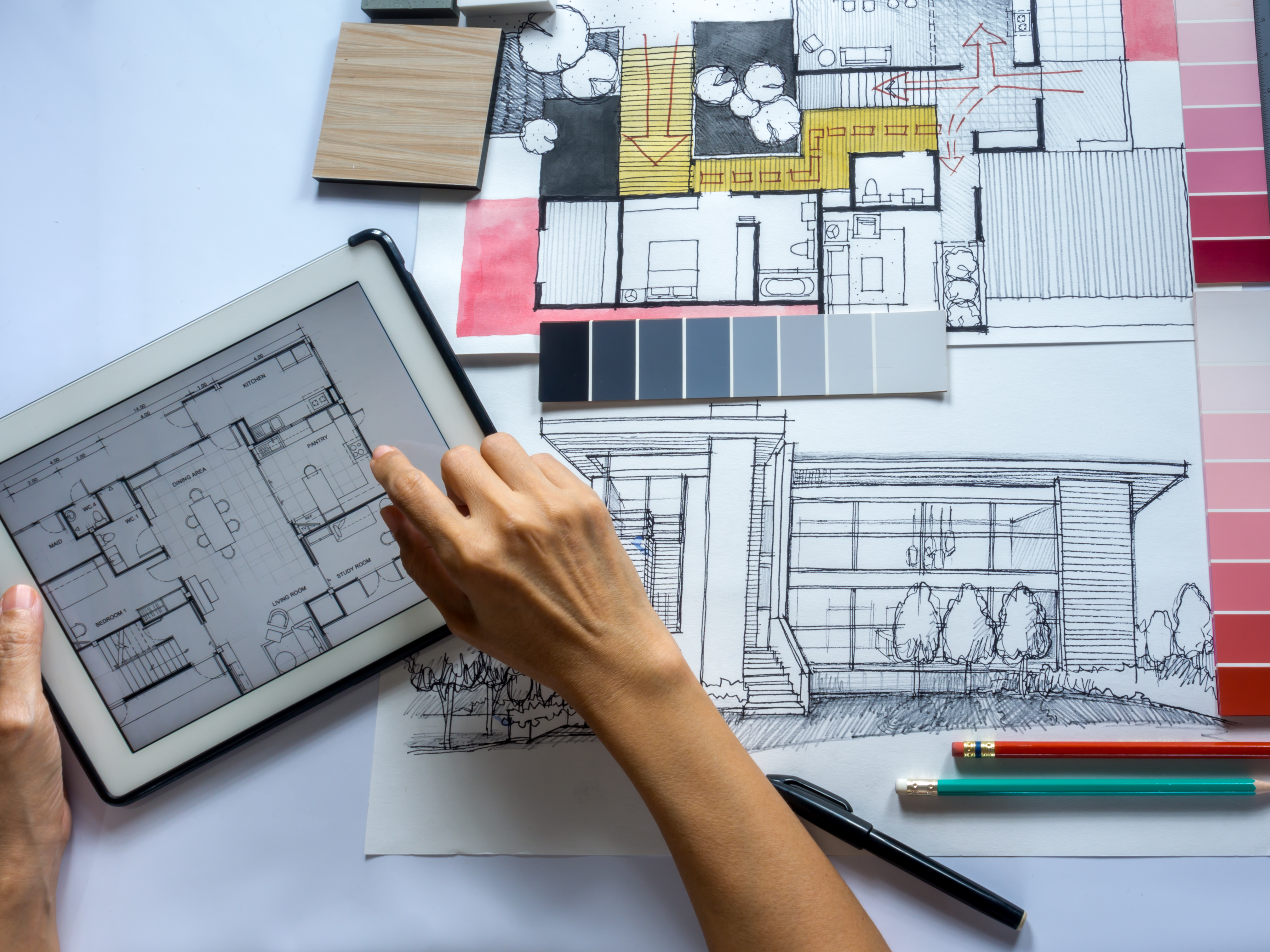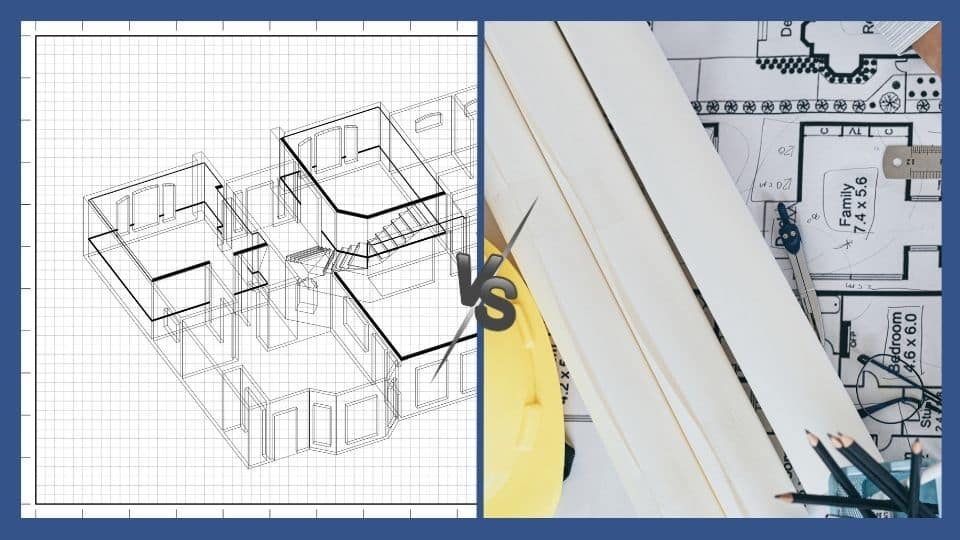Explore Expert Hampshire Design Professionals for Your Next Project
Explore Expert Hampshire Design Professionals for Your Next Project
Blog Article
The Art of Balance: Exactly How Interior Design and Home Designer Collaborate for Stunning Outcomes
In the world of home layout, striking an equilibrium between aesthetic appeals and performance is no little accomplishment. This delicate balance is accomplished through the harmonious cooperation in between indoor designers and architects, each bringing their unique proficiency to the table. Stay with us as we discover the complexities of this joint process and its transformative impact on home design.
Recognizing the Core Differences In Between Interior Decoration and Home Style
While both interior style and home architecture play necessary roles in producing cosmetically pleasing and functional areas, they are naturally different self-controls. It deals with the 'bones' of the framework, working with spatial dimensions, load-bearing wall surfaces, and roof styles. On the various other hand, indoor design is a lot more worried with enhancing the visual and sensory experience within that framework.
The Harmony Between Home Design and Interior Decoration
The synergy between home design and Interior Design depends on a shared vision of design and the enhancement of practical aesthetics. When these two fields line up sympathetically, they can change a living space from common to phenomenal. This cooperation requires a deeper understanding of each discipline's principles and the capability to produce a natural, cosmetically pleasing setting.
Unifying Layout Vision
Unifying the vision for home architecture and Interior Design can produce an unified home that is both functional and cosmetically pleasing. The balance begins with an integrated state of mind; architects and indoor designers collaborate, each bringing their competence. This unison of concepts creates the style vision, a plan that overviews the job. This common vision is essential for consistency throughout the home, ensuring a fluid change from outside design to indoor areas. It promotes a synergistic approach where building components enhance Interior Design components and the other way around. The outcome is a natural living area that reflects the homeowner's character, taste, and lifestyle. Thus, unifying the design vision is critical in mixing architecture and Interior Design for sensational results.
Enhancing Practical Visual Appeals
Just how does the synergy in between home architecture and Interior Design boost practical aesthetics? This synergy makes it possible for the development of spaces that are not just aesthetically appealing yet also easily useful. Designers lay the foundation with their structural style, making certain that the space is effective and functional. The interior designer then enhances this with carefully selected aspects that improve the looks without endangering the capability. This unified partnership can result in homes that are both lovely and liveable. An architect could make a home with high ceilings and big home windows. The interior developer can then highlight these features with high plants and large drapes, respectively, therefore improving the visual allure while keeping the sensible benefits of all-natural light and space.
Relevance of Cooperation in Creating Balanced Spaces
The partnership between indoor designers and engineers is essential in creating well balanced areas. It brings consistency between layout and design, bring to life rooms that are not only cosmetically pleasing however also practical. Exploring effective collaborative approaches can offer understandings into just how this synergy can be properly accomplished.
Integrating Style and Style
Balance, an essential element of both Interior Design and architecture, can only absolutely be attained when these 2 fields operate in harmony. This harmony is not just an aesthetic factor to consider; it impacts the capability, toughness, and ultimately, the livability of an area. Inside engineers and developers should recognize each various other's roles, appreciate their proficiency, and interact properly. They must think about the interaction of architectural elements with design, the flow of areas, and the influence of light and shade. This collaborative process leads to a natural, well balanced layout where every element has a purpose and contributes to the total visual. Balancing style and architecture is not simply regarding producing lovely rooms, yet concerning crafting rooms that function effortlessly for their occupants.
Effective Joint Techniques

Instance Researches: Successful Assimilation of Style and Design
Analyzing numerous case studies, it ends up being noticeable how the successful assimilation of indoor design and design can transform a room. Engineer Philip Johnson and interior developer Mies van der Rohe worked together to develop a harmonious balance between the framework and the interior, resulting in a seamless flow from the outside landscape to the internal living quarters. These instance researches underline the profound effect of a successful style and style cooperation.

Conquering Challenges in Layout and Design Cooperation
In spite of the undeniable advantages of a successful cooperation between Interior Design and design, it is not without its challenges. Interaction issues can develop, as both parties might use various terminologies, understandings, and strategies in their work. This can bring about misunderstandings and hold-ups in job conclusion. Another significant challenge is the balancing act of aesthetics and performance. Architects may focus on structural stability and safety and security, while designers concentrate on comfort and style. The assimilation of these objectives can be complicated. In addition, budget and timeline restrictions often add stress, possibly causing breaks in the cooperation. Consequently, effective communication, good understanding, and compromise are important to my review here get over these challenges and achieve a effective and unified collaboration.

Future Patterns: The Developing Partnership Between Home Architects and Inside Designers
As the globe of home style remains to develop, so does the partnership between designers and indoor designers. The pattern leans in the direction of a more collective and incorporated approach, breaking devoid of conventional duties. Architects are no longer exclusively concentrated on structural stability, yet also engage in improving visual allure - Winchester architect. Conversely, indoor designers are accepting pop over to these guys technical aspects, influencing total format and functionality. This evolving synergy is driven by advancements in modern technology and the expanding demand for spaces that are not only visually pleasing however sustainable and also useful. The future guarantees a much more natural, cutting-edge, and flexible strategy to home design, as designers and architects continue to blur the lines, fostering a relationship that really symbolizes the art of balance.
Final thought
The art of balance in home design is attained with the harmonious collaboration in between interior designers and engineers. An understanding of each other's disciplines, reliable interaction, and shared vision are important in creating aesthetically sensational, practical, and inviting spaces. Regardless of difficulties, this partnership cultivates growth and innovation in layout. As the connection in between home designers and interior developers evolves, it will certainly continue to form future patterns, boosting comfort, efficiency, and individual expression in our home.
While both indoor design and home design play essential functions in developing visually pleasing and useful spaces, they are naturally various disciplines.The harmony in between home architecture and indoor layout lies in a shared vision of layout and the enhancement of practical visual appeals.Merging the vision for home style and interior style can develop a harmonious living space discover here that is both practical and cosmetically pleasing. Thus, unifying the style vision is vital in mixing architecture and interior style for magnificent results.
Exactly how does the harmony in between home style and indoor design enhance practical appearances? (Winchester architect)
Report this page